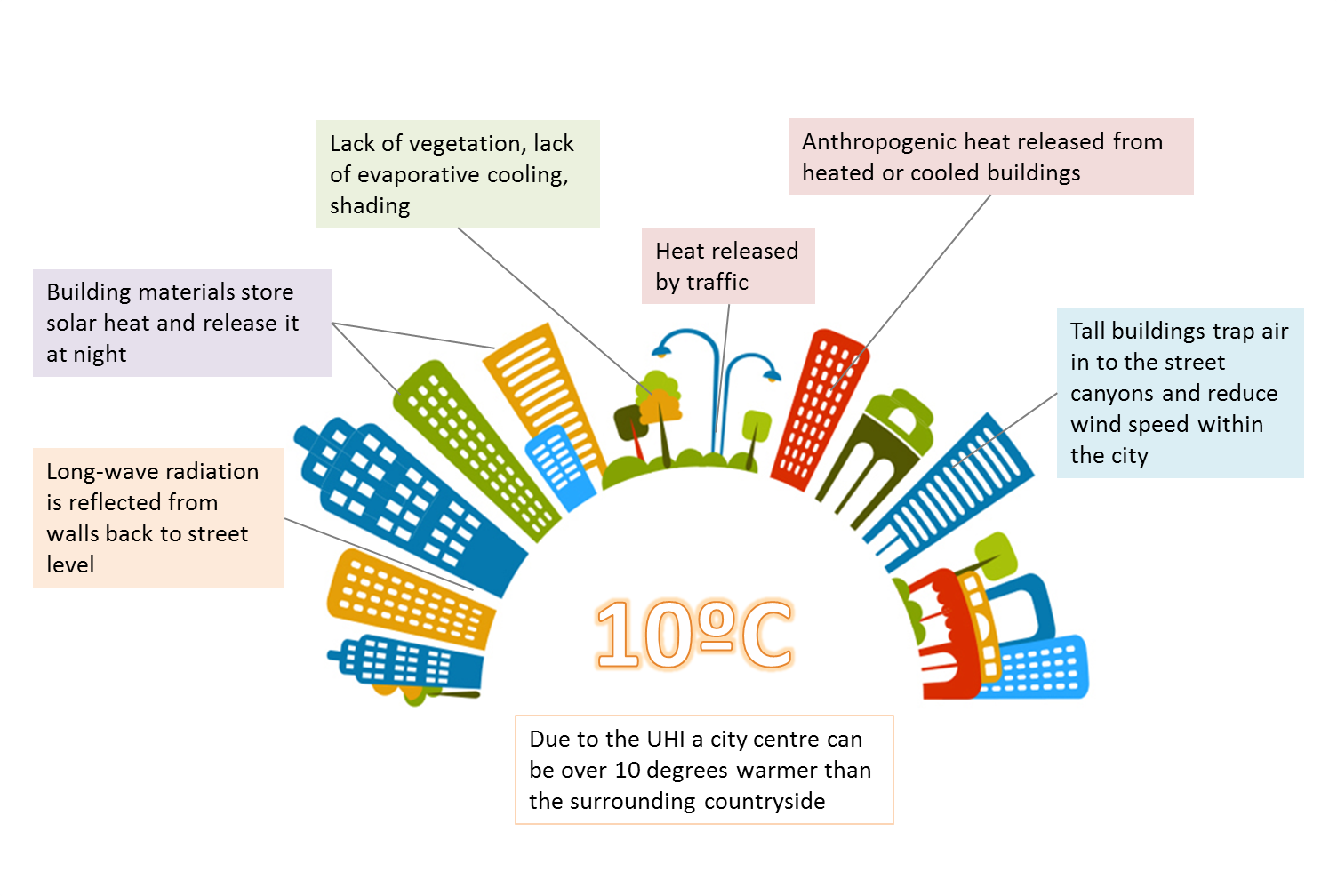Heat islands are crucial to understand whether one is laying out the blueprint for a city, or just planning out their own home. The EPA has dedicated a section of their website to teach the public about such heat islands. The website is divided into two parts, the first is about understanding heat islands and the effects, and the second part is about reducing the effects of heat islands.
On the first part of the website, the EPA discusses how the dark and impervious surfaces (occurring mainly in cities and some suburban areas) reach higher surface temperatures than what the actual air temperature is. Due to the increase in surface temperature, not only does the air temperature now slowly increase, but there is also an increase in the demand for electricity. Since the demand for electricity goes up, the production of electricity must also go up; this in turn releases more pollutants into the atmosphere. Heat islands and higher temperatures have also been linked to an increase in the number of hospital visits in both the young children, the elderly, and the homeless.

The second part of the website aims to inform readers about ways to reduce the effects of heat islands – such methods include planting more vegetation, both on top of and around buildings, and also using materials for pavements and roofs that reflect more energy than they absorb. These methods to reduce the effects of heat islands are recommended on both the household level, and community level. Further, cities and towns can change codes so that buildings comply with policies that make heat islands less prevalent.
As the younger generation seems to be the one more involved with climate change and the environment, I found it a little surprising that the EPA did not recommend any solutions for students or non-homeowners. Just about all the suggestions to reduce the effects of heat islands were only applicable if one is a homeowner in a suburban area. It would be beneficial for the EPA to market their solutions towards those who are most interested, yet at the same time, marketing effective solutions towards the younger generations is quite difficult given the circumstances of the problem.

I think this website is a great tool for all citizens to learn about Urban Heat Islands. Its a growing problem and citizens often don’t know how they can effect them and the issues they cause. I think the section about how readers can reduce the effects of heat islands is the most beneficial, because it allows readers to take action and not just be informed about UHIs. I agree that the EPA should focus more on the younger generation, as they are a large supporter of the EPA.
I agree that the EPA should strive to be more engaged with their younger viewers. I’d also recommend adding to this website a section regarding how citizens can get involved in their community (such as by providing a list of charities and civic leaders who seek to reduce the UHI effect), as well as a section regarding cities’ current solutions (such as Los Angeles’ decision to paint its streets white) and whether or not said solutions seem to be working (even if the project is still in its nascent stage). While this website is good, I think it would be better if it showed people how they could make a difference even if they don’t own a home. In addition, if city leaders could see that others are in the vanguard of sustainable cities, they might be inspired/more likely to try to fight urban warming.
I think this is a really cool website that provides a lot of useful information about an important topic. I like how you explained the two parts of the website and that you included a helpful info-graphic. I found it odd that on the urban heat islands website, there is nothing about what you can do if you live in an urban area since urban heat islands are an urban problem.
I think this website is really relevant to the class and it’s a great resource for people to learn more about urban heat islands. I think you make a good point on addressing the problem of EPA not recommending solutions for students or young people and I agree that it would be beneficial for the EPA to market their solutions towards younger generations who have shown to be interested in solutions.